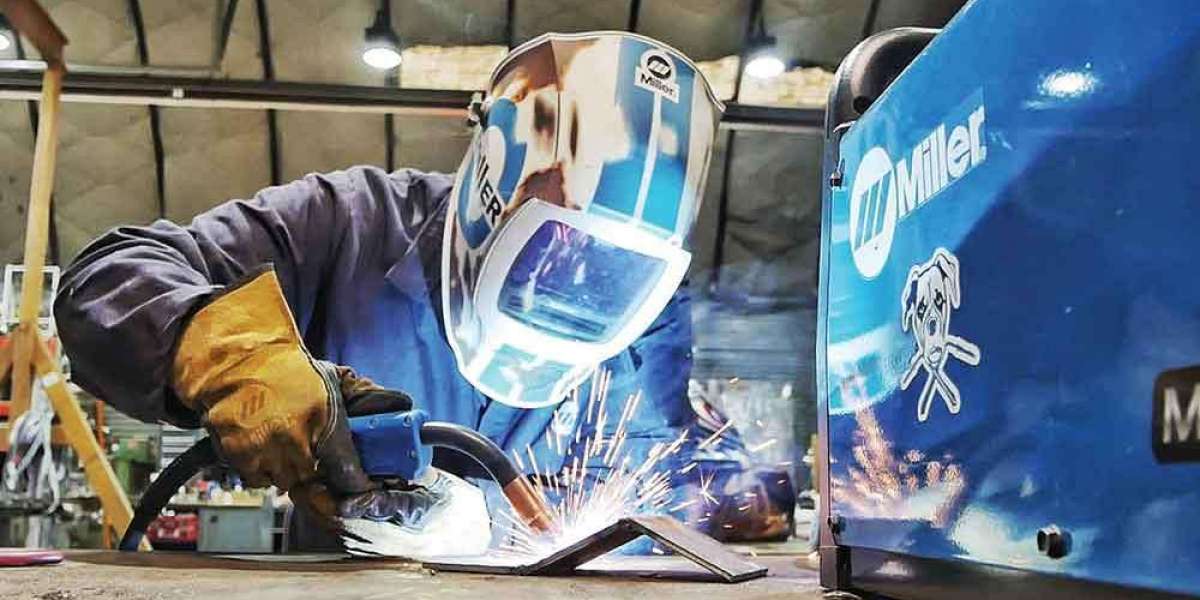Turning a raw, versatile metal into a sleek, sturdy product that meets your exact specifications. That's the magic of aluminum fabrication! Whether you're designing custom parts for machinery, crafting intricate architectural elements, or working on cutting-edge aerospace components, aluminum fabrication can bring your vision to life. In this post, we'll dive deep into the aluminum fabrication process, explore various techniques and tools, and provide insights into the industry's leading services and companies. By the end, you'll have a comprehensive understanding of how aluminum fabrication can transform your projects from concept to reality.
What is Aluminum Fabrication?
Aluminum fabrication involves changing and assembling aluminum into finished products. This can include cutting, bending, welding, machining, and putting together aluminum parts. Aluminum is valued for being lightweight, resistant to rust, and having a great strength-to-weight ratio. This makes it perfect for many uses.
The Aluminum Fabrication Process
The aluminum fabrication process can be broken down into several key steps:
Design and Planning: This first stage involves creating detailed blueprints and 3D models of the final product. Advanced CAD (Computer-Aided Design) software is often used to ensure precision and accuracy.
Material Selection: Choosing the right type of aluminum is crucial. Common options include aluminum 6061, 7075, and 5052, each with its own unique properties suitable for different applications.
Cutting: Aluminum sheets or profiles are cut to the required dimensions. This can be done using various cutting methods such as laser cutting, water jet cutting, or traditional sawing.
Forming and Bending: The cut pieces are then bent or formed into the desired shapes. This step often involves specialized machinery like press brakes or roll forming machines.
Welding and Joining: Individual parts are welded or joined together. Aluminum welding techniques such as TIG (Tungsten Inert Gas) welding or MIG (Metal Inert Gas) welding are commonly used.
Machining: CNC (Computer Numerical Control) machines are used to achieve precise cuts, holes, and finishes. CNC machining allows for high accuracy and consistency in complex parts.
Finishing: The fabricated parts undergo finishing processes like sanding, polishing, anodizing, or powder coating to enhance appearance and durability.
Assembly: Finally, the individual components are assembled into the final product, ready for use or further integration.
Custom Aluminum Fabrication
Custom aluminum fabrication allows for the creation of unique products tailored to specific needs. This service is particularly valuable in industries like aerospace, automotive, construction, and consumer electronics, where unique, high-performance components are often required.
Aluminum Welding Techniques
Welding aluminum presents unique challenges due to its thermal conductivity and oxide layer. Here are some commonly used aluminum welding techniques:
TIG Welding: TIG welding provides high precision and control, making it ideal for thin materials and intricate welds. It's widely used for applications requiring clean, strong welds.
MIG Welding: MIG welding is faster than TIG welding and is suitable for thicker materials. It involves feeding a continuous wire into the weld pool, which melts to form the weld.
Spot Welding: Used primarily for joining sheet metal, spot welding uses pressure and electrical current to fuse pieces together at specific points.
Aluminum Sheet Metal Fabrication
Sheet metal fabrication involves transforming flat sheets of aluminum into functional parts and structures. This process includes cutting, bending, punching, and assembling. Sheet metal fabrication is essential in industries like automotive, aerospace, and construction, where lightweight, durable components are required.
CNC Aluminum Machining
CNC machining is a critical aspect of aluminum fabrication, enabling the production of precise and complex parts. CNC machines use computer-controlled tools to remove material from aluminum workpieces, achieving tight tolerances and intricate designs. This technology is crucial for producing high-quality components for various industries, from medical devices to aerospace parts.
Aluminum Fabrication Services
Aluminum fabrication services encompass a wide range of capabilities, including design, prototyping, manufacturing, and finishing. Leading aluminum fabrication companies offer comprehensive services to meet diverse customer needs, from small custom orders to large-scale production runs.
Aluminum Extrusion Profiles
Aluminum extrusion is a process where aluminum billets are heated and forced through a die to create specific shapes, known as profiles. These profiles can be simple or complex, depending on the die design. Aluminum extrusion profiles are used in construction, transportation, and consumer products due to their strength, light weight, and versatility.
Aluminum Fabrication Companies
Several companies specialize in aluminum fabrication, offering various services and expertise. Some of the industry leaders include:
Alcoa: A global leader in aluminum production and fabrication, Alcoa offers a wide range of aluminum products and solutions.
Kaiser Aluminum: Known for its high-quality aluminum products, Kaiser Aluminum serves industries like aerospace, automotive, and general engineering.
Hydro Extrusions: Hydro specializes in aluminum extrusion and offers comprehensive fabrication services, including machining, welding, and finishing.
Aluminum Welding Rods
Choosing the right welding rods is crucial for successful aluminum welding. Common types of aluminum welding rods include:
4043: Suitable for welding 6000 series aluminum, 4043 rods offer good corrosion resistance and are easy to use.
5356: These rods provide higher strength and are commonly used for welding 5000 series aluminum alloys.
Aluminum Fabrication Tools
Effective aluminum fabrication requires a range of specialized tools and equipment, including:
Cutting Tools: Tools like band saws, laser cutters, and water jets are used for precise cutting of aluminum sheets and profiles.
Forming Tools: Press brakes, rollers, and bending machines are essential for shaping aluminum into the desired forms.
Welding Equipment: TIG and MIG welders, along with the appropriate welding rods, are crucial for joining aluminum parts.
CNC Machines: CNC mills and lathes are used for machining aluminum with high precision.
Conclusion
Aluminum fabrication is a versatile and essential process that transforms raw aluminum into functional, high-quality products. Whether you're looking for custom aluminum parts, intricate welding techniques, or precise CNC machining, the aluminum fabrication industry offers a wealth of expertise and capabilities to bring your vision to life. By understanding the processes, techniques, and tools involved, you can make informed decisions and achieve outstanding results in your projects.









